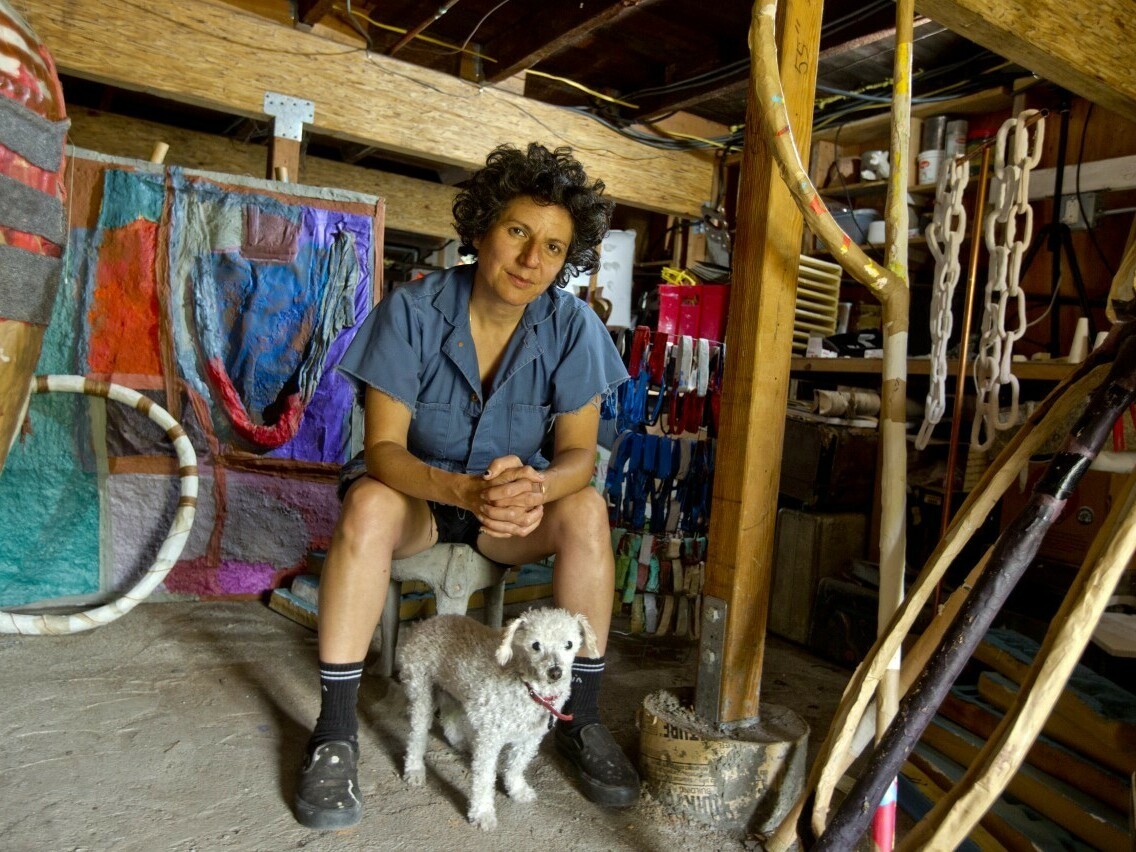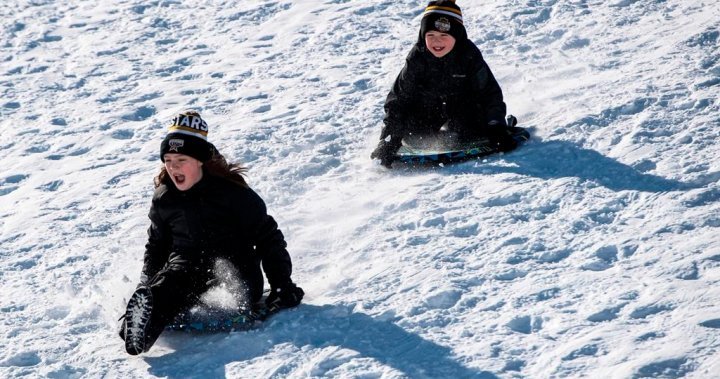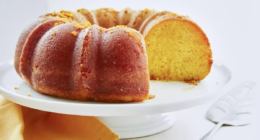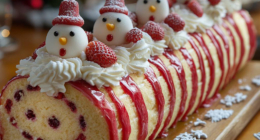by Joan Brown Jane + Donald1982, Enamel oil on canvas, 72 1/4 x 60 in. (183.5 x 152.4 cm), Adam Lindemann Collection
Venus over Manhattan, New York
hide caption
toggle caption
Venus over Manhattan, New York

by Joan Brown Jane + Donald1982, Enamel oil on canvas, 72 1/4 x 60 in. (183.5 x 152.4 cm), Adam Lindemann Collection
Venus over Manhattan, New York
At the San Francisco Museum of Modern Art (SFMOMA), there is a captivating self-portrait of artist Joan Brown hugging Donald, her resplendent tabby cat.

“She clings so tightly to Donald,” SFMOMA Associate Curator of Painting and Sculpture Nancy Lim recently said during a tour of the museum’s current major retrospective on the late San Francisco artist. . “It’s not just a hug. It’s something more.”
Every day, millions of people around the world post photos and videos of their pets online. According to a recent OnePoll survey, one in four people in the United States have social media accounts for their furry friends. But the tradition of creating and sharing such images goes back about 300 years in painting and sculpture.

Artist Sahar Khoury with her dog Esther, 2018. The Oakland, CA-based sculptor has created numerous works of art featuring Esther and her other pets.
Tommy Lau/Yerba Buena Center for the Arts
hide caption
toggle caption
Tommy Lau/Yerba Buena Center for the Arts

Artist Sahar Khoury with her dog Esther, 2018. The Oakland, CA-based sculptor has created numerous works of art featuring Esther and her other pets.
Tommy Lau/Yerba Buena Center for the Arts
Brown painted dozens of photos of his pets between the 1960s and 1980s. The cats and dogs in his works appear fully present, self-aware, and omniscient; In Jane + Donald (1982), the feline has a particularly frank gaze with its large yellow eyes.
“Joan considered him very wise,” Lim said. “Someone who could hold a human conversation, if he could.”
Donald was more than a close companion to Brown. Lim said he was also a business asset.
“She decided to list it as a deduction from income, because he was an at-home model,” Lim said.
The IRS audited the entertainer for deducting cat food and vet bills on his tax return, but Brown successfully argued his case. And Lim said his cat subsequently earned a nickname.
“His friends called him ‘Donald the franchise,’” she said.
Part of an artist’s daily life
Sahar Khoury said she was impressed by Joan Brown’s cheek.
“I’m so scared of the IRS,” the Oakland-based artist said. “I won’t even claim my essence.”

Khoury visited the Jane Brown exhibit with her service animal Esther, an adorable white pooch with curly hair and floppy ears.
“She’s currently around 14 and travels with me everywhere I go,” Khoury said. “She unwittingly became part of my job.”
Over the years, Khoury has created many sculptures representing her pets, including a fantastic circus-style pyramid of 15 glazed ceramic Esthers perched on top of each other. Khoury said that just like Joan Brown, her pets — she also has a model cat/artist named Lola — are part of her daily landscape.

At Sahar Khoury Untitled (15 Esthers in pyramid on a base in bone relief)2018, Glazed ceramic, steel, cement, resin
Charlie Villard/Yerba Buena Center for the Arts
hide caption
toggle caption
Charlie Villard/Yerba Buena Center for the Arts

At Sahar Khoury Untitled (15 Esthers in pyramid on a base in bone relief)2018, Glazed ceramic, steel, cement, resin
Charlie Villard/Yerba Buena Center for the Arts
“You just archive your daily life,” Khoury said. “And I can’t imagine animals not being part of that.”
A Modern Western Tradition
The history of artists drawing inspiration from non-human animals dates back to the beginning of art history.
“But doing portraits of pets is really a more modern phenomenon and largely in the western world,” said Alan Braddock, a professor at the College of William and Mary in Virginia who studies depictions of animals in the world. art.
Braddock said the tradition is rooted in Western philosophical notions of human individualism – which lead to the idea that pets are fully realized beings rather than just “dumb animals”.

by William Hogarth The painter and his pug, 1745, Tate, London, purchased 1824
Photograph by Tate
hide caption
toggle caption
Photograph by Tate

by William Hogarth The painter and his pug, 1745, Tate, London, purchased 1824
Photograph by Tate
An early example is British satirical artist William Hogarth’s 1745 self-portrait titled The painter and his pug. In the dark-toned painting, the artists pose formally in the background, while the pug – named Trump – stands in front, its tongue sticking out at the viewer.
“Hogarth loved his dog and saw the dog as a sort of emblem of his own pugnacity as an artist,” Braddock said.

Other artists followed suit. Pablo Picasso studied Lump, a beloved dachshund; Frida Kahlo’s catalog is full of self-portraits featuring her pet monkeys and parrots.
“She admired the creativity of animals and saw it as a reflection of her own,” Braddock said of the famous 20th-century Mexican artist.
Artists who depict other people’s pets
Some artists who paint other people’s pets feel that same sense of kinship.
Jesse Freidin worked as a professional canine photographer for 15 years and is perhaps best known for a series of portraits he made in 2010 of assorted dogs dressed as Lady Gaga – The Doggie Gaga Project.
“I wasn’t just photographing dogs,” Freidin said. “I was photographing relationships and studying people.”

Three pictures of The Doggie Gaga Project, a 2010 portrait series featuring dogs posing in Lada Gaga outfits by Jesse Freidin.
Jesse Freidin
hide caption
toggle caption
Jesse Freidin

Three pictures of The Doggie Gaga Project, a 2010 portrait series featuring dogs posing in Lada Gaga outfits by Jesse Freidin.
Jesse Freidin
Freidin said the art he creates with dogs aims to achieve something deeper than cuteness, although Doggie Gagas are admittedly very cute.
“I don’t want to put myself in front of the camera,” Freidin said. “But I want to articulate something about my human condition and my experience. An animal becomes that outward representation. And that’s powerful.”
Jane Brown runs at the San Francisco Museum of Modern Art through March 12, 2023. It then continues at the Carnegie Museum of Art, Pittsburgh, Pennsylvania (May 27–September 24, 2023) and Orange County Museum of Art, Costa Mesa, California (February 7-May 1, 2024).
Audio and digital stories edited by Jennifer Vanasco. Sound produced by Isabelle Gomez-Sarmiento. Digital produced by Beth Novey.
Entertainment
Don’t miss interesting posts on Famousbio










